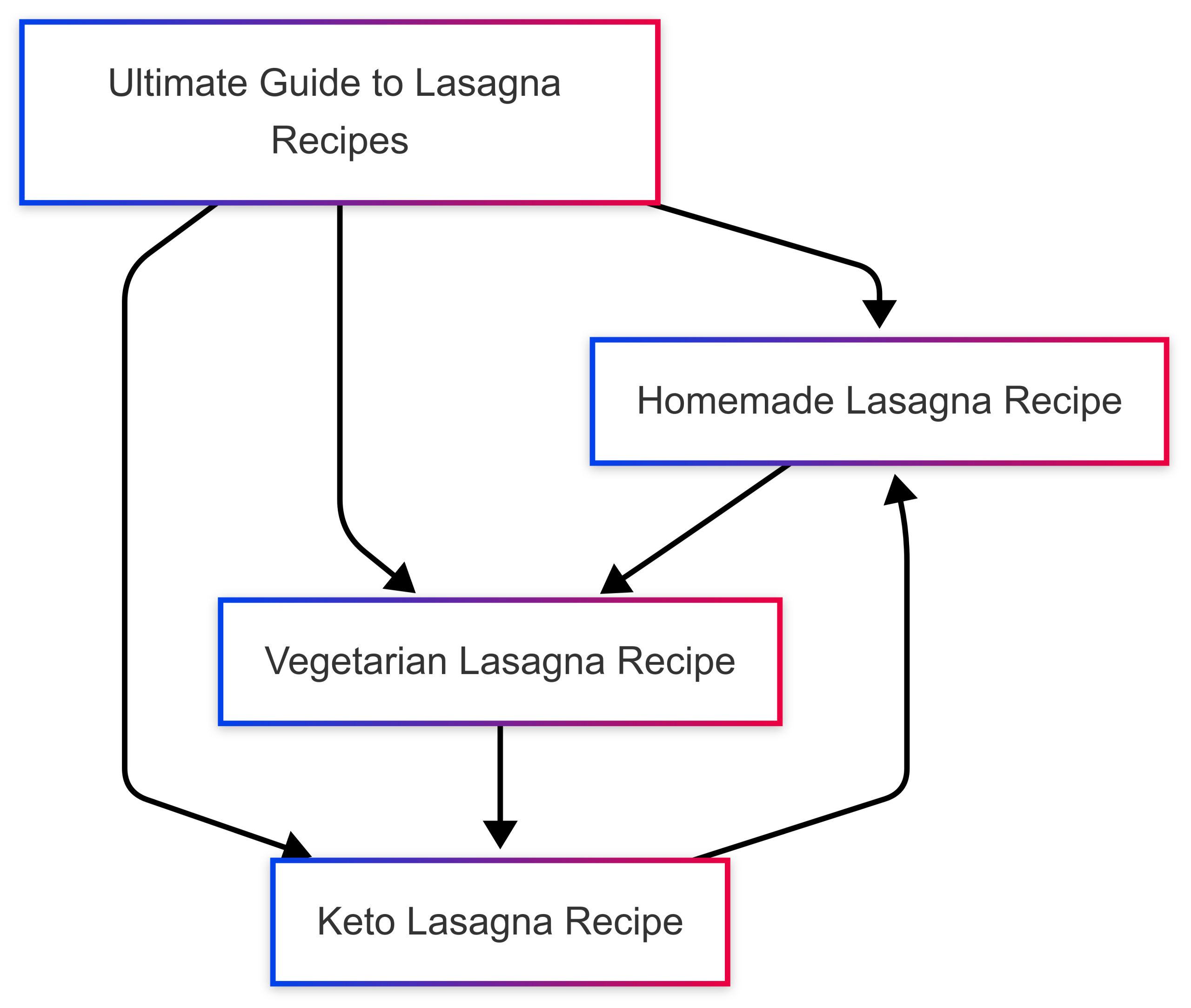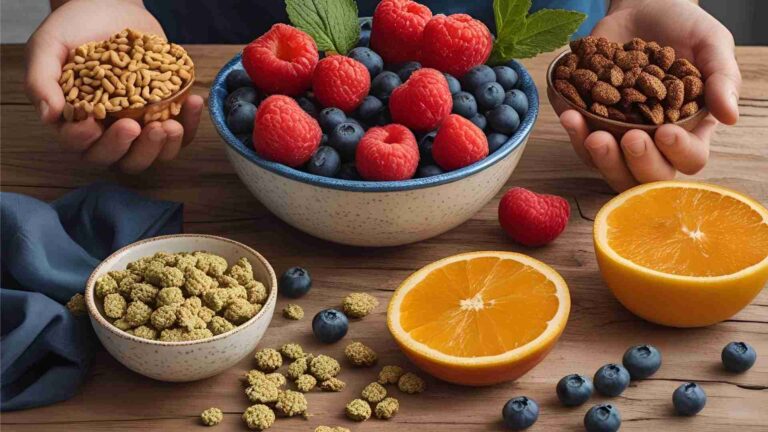How to Do Keyword Clustering for Recipe Blogs
In the competitive world of food blogging, standing out on search engine results pages (SERPs) can feel like a daunting task, especially when giants like Allrecipes, Food Network, and Delish dominate recipe-related keywords. However, with the right strategy, smaller recipe blogs can carve out a niche and attract a loyal audience. Keyword clustering is a powerful SEO technique that helps food bloggers organize their content, target multiple related keywords, and improve their rankings efficiently. This guide dives deep into keyword clustering for recipe blogs, offering actionable steps, tools, and strategies to boost your blog’s visibility and drive targeted traffic.
What Is Keyword Clustering?
Keyword clustering is the process of grouping related keywords based on their search intent, meaning, or topical relevance. Instead of creating separate content for each keyword, you target a cluster of keywords with a single piece of content or a series of interlinked pages. For recipe blogs, this means organizing keywords like “homemade lasagna recipe,” “easy lasagna recipe,” and “classic lasagna ingredients” into a single cluster to create cohesive, authoritative content.
Why Keyword Clustering Matters for Recipe Blogs
Search engines like Google have evolved beyond matching exact keywords to understanding the context and intent behind a user’s query. By clustering keywords, you signal to search engines that your content comprehensively covers a topic, increasing its relevance and authority. For recipe blogs, keyword clustering offers several benefits:
- Improved Rankings: Targeting multiple related keywords in one piece of content increases your chances of ranking for a broader range of search queries.
- Efficient Content Creation: Instead of writing separate posts for similar keywords, you can create one in-depth article, saving time and resources.
- Enhanced User Experience: Well-organized content that addresses various aspects of a topic keeps readers engaged and reduces bounce rates.
- Prevention of Keyword Cannibalization: Clustering ensures you don’t create competing pages for similar keywords, which can confuse search engines and dilute your rankings.
- Topical Authority: By covering a topic thoroughly, you establish your blog as an authority in specific recipe niches, such as vegan desserts or gluten-free baking.
The Keyword Clustering Process for Recipe Blogs
Keyword clustering involves a systematic approach to researching, grouping, and implementing keywords. Below is a step-by-step guide tailored to recipe blogs, complete with examples and tools to streamline the process.
Step 1: Generate a List of Keywords
The foundation of keyword clustering is a robust list of keywords relevant to your recipe blog. Start by brainstorming broad “seed” keywords related to your niche, such as:
- Italian recipes
- Vegan desserts
- Quick dinner ideas
- Gluten-free baking
Tools for Keyword Research
Use keyword research tools to expand your list and gather data on search volume, keyword difficulty (KD), and competition. Here are some popular options:
| Tool | Description | URL | Price |
|---|---|---|---|
| Ahrefs | Comprehensive SEO tool for keyword research, competitor analysis, and clustering | ahrefs.com | Starts at $99/month |
| SEMrush | Offers keyword clustering, intent analysis, and content planning tools | semrush.com | Starts at $129.95/month |
| Google Keyword Planner | Free tool for keyword ideas and search volume, ideal for beginners | ads.google.com | Free |
| KeySearch | Affordable option for small bloggers with keyword research and clustering | keysearch.co | Starts at $17/month |
| WP Recipe Maker | WordPress plugin for optimizing recipe content with structured data | bootstrapped.ventures | Starts at $49/year |
Example: Building a Keyword List
Suppose your niche is Italian recipes. Enter “Italian recipes” into Ahrefs’ Keywords Explorer or SEMrush. You might get related keywords like:
- Homemade lasagna recipe
- Easy spaghetti carbonara
- Classic tiramisu recipe
- Italian pasta dishes
- Gluten-free Italian recipes
Additionally, use Google’s autocomplete, “People Also Ask” (PAA) boxes, and related searches at the bottom of the SERPs to uncover long-tail keywords. For instance, searching “lasagna recipe” might reveal:
- “Quick lasagna recipe no boil noodles”
- “Vegetarian lasagna recipe easy”
- “Lasagna recipe with ricotta cheese”
Competitor Analysis
Analyze top-ranking recipe blogs to identify keywords they target. Enter a competitor’s URL into Ahrefs’ Site Explorer or SEMrush to see their organic keywords. For example, if a smaller blog ranks well for “keto lasagna recipe,” it indicates a less competitive keyword you can target.
Step 2: Group Keywords by Search Intent
Once you have a list of keywords, categorize them into clusters based on their search intent. Search intent falls into four main types:
- Informational: Users seek knowledge (e.g., “how to make lasagna from scratch”).
- Navigational: Users look for a specific site (e.g., “Allrecipes lasagna recipe”).
- Commercial: Users research before purchasing (e.g., “best lasagna pan for baking”).
- Transactional: Users are ready to buy or act (e.g., “buy lasagna ingredients online”).
How to Group Keywords
- Manual Grouping: Review your keyword list and group terms with similar meanings or purposes. For example, “homemade lasagna,” “easy lasagna recipe,” and “classic lasagna” likely share the same intent and can form a cluster.
- SERP Analysis: Check if the same pages rank for multiple keywords. If the top 5–7 results for “vegan lasagna recipe” and “plant-based lasagna” overlap, they belong in the same cluster.
- Tool-Based Clustering: Use tools like Ahrefs’ “Clusters by Parent Topic” or Keyword Insights to automate grouping. These tools analyze SERP similarity and intent to create clusters instantly.
Example Keyword Cluster
Here’s a sample cluster for the topic “lasagna recipes”:
| Keyword | Search Volume | Keyword Difficulty (KD) | Intent |
|---|---|---|---|
| Homemade lasagna recipe | 12,000 | 25 | Informational |
| Easy lasagna recipe | 8,000 | 20 | Informational |
| Classic lasagna recipe | 5,500 | 18 | Informational |
| Vegetarian lasagna recipe | 3,200 | 15 | Informational |
| Lasagna recipe with ricotta | 2,800 | 12 | Informational |
Parent Topic: Lasagna recipes
This cluster can be targeted with a single comprehensive article or a pillar page linking to supporting content for specific variations (e.g., vegetarian or keto lasagna).
Chart: Keyword Cluster Structure

This chart illustrates how a pillar page on “Lasagna Recipes” links to supporting content, reinforcing topical authority.
Step 3: Analyze Keyword Metrics
Evaluate each keyword in your cluster for search volume, keyword difficulty, and competition to determine the best approach. For example:
- High Search Volume, High KD: Keywords like “lasagna recipe” (20,000 searches, KD 40) are competitive and better suited for authoritative sites.
- Low Search Volume, Low KD: Keywords like “keto lasagna recipe” (1,000 searches, KD 10) are easier to rank for and ideal for smaller blogs.
Use tools to check:
- Backlinks: If top-ranking pages have few backlinks, you can outrank them with better content.
- Content Quality: If competitors’ content is thin (e.g., just a recipe card), create a detailed post with visuals and tips.
- Rich Snippet Opportunities: Keywords without rich snippets (e.g., recipe carousels) are prime targets for optimization with WP Recipe Maker.
Step 4: Create a Content Strategy
With your clusters ready, develop a content plan that aligns with your blog’s goals and audience needs. Here’s how to implement clusters effectively:
1. Build Pillar Pages
Create a comprehensive “pillar” page for each major cluster. For the lasagna cluster, a pillar page titled “The Ultimate Guide to Lasagna Recipes” could cover the history of lasagna, popular variations, and general tips, linking to supporting content.
2. Develop Supporting Content
Publish targeted articles for specific keywords within the cluster. Examples include:
- “10-Minute Vegetarian Lasagna Recipe for Busy Weeknights”
- “How to Make Keto Lasagna with Zucchini Noodles”
- “The Best Ricotta Cheese for Classic Lasagna”
These pages should link back to the pillar page and to each other where relevant, creating a strong internal linking structure.
3. Optimize On-Page Elements
Incorporate clustered keywords strategically:
- Title Tag and H1: Use the primary keyword (e.g., “Homemade Lasagna Recipe”).
- Subheadings: Include related keywords (e.g., “Easy Lasagna Variations”).
- Body Text: Naturally weave in long-tail keywords and synonyms (e.g., “classic lasagna ingredients”).
- Meta Descriptions: Highlight the cluster’s theme to improve click-through rates.
- Image Alt Text: Use descriptive keywords (e.g., “vegetarian lasagna recipe step-by-step”).
4. Leverage WP Recipe Maker
WP Recipe Maker is a must-have for recipe bloggers. This WordPress plugin enhances SEO by:
- Adding structured data for rich snippets (e.g., recipe carousels, star ratings).
- Optimizing recipe metadata (titles, descriptions) for specific keywords.
- Creating user-friendly recipe cards with step-by-step instructions, ingredient lists, and videos.
Price: Starts at $49/year for a single site license.
5. Build Internal Links
Internal linking boosts the authority of your cluster. For example:
- Link from the pillar page to all supporting articles.
- Link between related supporting pages (e.g., from “Vegetarian Lasagna” to “Keto Lasagna”).
- Use keyword-rich anchor text (e.g., “easy lasagna recipe”).
Chart: Internal Linking Structure

Step 5: Monitor and Refine
SEO is an ongoing process. Use tools like Google Search Console, Ahrefs, or SEMrush to track your cluster’s performance. Monitor:
- Rankings: Are your pages climbing for primary and secondary keywords?
- Traffic: Are you attracting more visitors from clustered keywords?
- Engagement: Are users spending more time on your pages?
If certain keywords underperform, revisit your content to:
- Add more depth (e.g., videos, FAQs).
- Update internal links.
- Target new long-tail keywords within the cluster.
Advanced Keyword Clustering Strategies
To take your recipe blog to the next level, consider these advanced techniques:
1. Target Seasonal Keywords
Recipe searches often follow seasonal trends (e.g., “pumpkin pie recipe” peaks in fall). Use Google Trends to identify seasonal keywords and create clusters around them. For example:
| Keyword | Peak Season | Search Volume | KD |
|---|---|---|---|
| Pumpkin pie recipe | October–November | 50,000 | 30 |
| Easy pumpkin pie | October–November | 10,000 | 20 |
| Gluten-free pumpkin pie | October–November | 3,000 | 15 |
Create a pillar page like “The Best Pumpkin Pie Recipes for Fall” and publish it before the season peaks.
2. Optimize for Rich Snippets
Rich snippets (e.g., recipe carousels, star ratings) increase click-through rates. WP Recipe Maker automatically adds structured data, but you can enhance it with:
- Nutrition information
- Cooking times
- Video markup
Test your structured data with Google’s Rich Results Test tool (richresultstest.google.com).
3. Explore Niche Angles
Target underserved niches like dietary variations (e.g., “vegan tiramisu”) or regional cuisines (e.g., “Sicilian pasta recipes”). These keywords often have lower competition and attract highly engaged audiences.
4. Use Term Clustering
Group keywords by common phrases rather than SERP similarity. For example, for the seed keyword “Italian recipes,” you might find clusters like:
- “Quick Italian recipes”
- “Authentic Italian dishes”
- “Italian recipes for beginners”
This approach helps identify trends and niches within your niche.
Common Mistakes to Avoid
- Ignoring Search Intent: Ensure all keywords in a cluster share the same intent. For example, “buy lasagna ingredients” (transactional) doesn’t belong with “homemade lasagna recipe” (informational).
- Overloading Clusters: Don’t cram unrelated keywords into one cluster to avoid diluting relevance.
- Neglecting Long-Tail Keywords: Broad keywords like “lasagna” are competitive; focus on long-tail variations like “easy vegetarian lasagna recipe.”
- Static Clusters: Search trends change, so revisit and update your clusters regularly.
Measuring the Effectiveness of Keyword Clustering
Track your keyword clustering strategy’s success using:
- Google Search Console: Monitor impressions, clicks, and average position for clustered keywords.
- Ahrefs/SEMrush: Track ranking improvements and organic traffic growth.
- Google Analytics: Measure engagement metrics like time on page and bounce rate.
For example, after implementing a lasagna recipe cluster, you might see:
| Metric | Before Clustering | After Clustering |
|---|---|---|
| Organic Traffic | 500 visits/month | 800 visits/month |
| Average Ranking Position | 15 | 8 |
| Bounce Rate | 60% | 45% |
Case Study: A Small Recipe Blog’s Success
A small vegan recipe blog implemented keyword clustering to target “vegan dessert recipes.” They created a pillar page, “The Ultimate Guide to Vegan Desserts,” and supporting articles like “Easy Vegan Chocolate Cake” and “Gluten-Free Vegan Cookies.” Using WP Recipe Maker, they optimized for rich snippets. Results after six months:
- 40% increase in organic traffic.
- 3 keywords in the top 3 SERP positions.
- 25% higher click-through rate due to rich snippets.
Conclusion
Keyword clustering is a game-changer for recipe blogs looking to compete in a crowded digital landscape. By grouping related keywords, creating comprehensive content, and leveraging tools like WP Recipe Maker, you can improve your SEO, attract targeted traffic, and build topical authority. Start by researching keywords, grouping them by intent, and crafting a strategic content plan. Monitor your performance, refine your clusters, and watch your recipe blog rise in the rankings.
Ready to supercharge your recipe blog? Begin clustering your keywords today and transform your SEO strategy!
Please share this How to Do Keyword Clustering for Recipe Blogs with your friends and do a comment below about your feedback.
We will meet you on next article.
Until you can read, Pinterest Marketing for Food Bloggers: Guide






